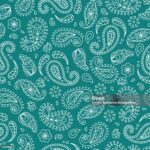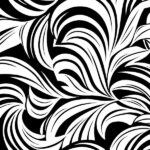Woven in Checks: Gingham’s Cultural Tapestry
Key Takeaways:
- Historical Evolution: Gingham patterns originated in Southeast Asia, underwent transformations in European and American fashion, and continue to adapt to contemporary trends, showcasing their enduring appeal across centuries.
- Cultural Symbolism: Gingham goes beyond aesthetics, holding symbolic significance in traditions, invoking nostalgia, and even serving as a symbol of rebellion, showcasing its versatility and cultural depth.
- Contemporary Resurgence: In the 21st century, gingham experiences a vibrant comeback in fashion and design, with modern interpretations on runways, in everyday fashion, and interior design, proving its timeless charm.
- Versatility in Sustainability: Gingham embraces sustainability trends in fashion, with designers opting for eco-friendly fabrics, aligning with contemporary values while maintaining the pattern’s classic allure.
- Timeless Legacy: Gingham’s legacy persists as it seamlessly integrates into various aspects of life, from fashion runways to interior spaces, leaving an indelible mark on the ever-evolving world of design.
Introduction to Gingham Pattern
Gingham patterns have been a timeless and versatile design element, weaving their way into the fabric of fashion and design for centuries. This classic pattern, characterized by its distinctive checked design, holds a unique allure that transcends time and trends. In this exploration, we delve into the rich history and cultural significance of gingham, uncovering the reasons behind its enduring popularity and its diverse applications across various domains.
Unveiling the Timeless Charm of Gingham Patterns
The Origin Story
Gingham’s origin can be traced back to Southeast Asia, where it was first woven into a distinct checked pattern. Initially, it gained prominence as a striped fabric in Indonesia, known as “genggang.” However, it was in the 18th century when gingham, as we recognize it today, started making waves in the fashion world.
The term “gingham” is believed to have European roots, possibly deriving from the Malayan word “genggang.” As European traders and explorers encountered this unique fabric during their travels, they brought it back to the Western world, marking the beginning of gingham’s global journey.
As gingham reached Europe and later the Americas, it underwent various transformations, adapting to different cultural aesthetics and fashion sensibilities. The iconic checked pattern became synonymous with both rustic charm and urban chic, laying the groundwork for its enduring appeal.
A Pattern for Every Occasion
Gingham patterns, with their simple yet striking design, have found a place in a multitude of settings. From casual clothing to high-end fashion, interior décor to table linens, gingham seamlessly integrates into diverse environments, making it a favorite among designers and consumers alike.
Weaving Through Time – Gingham’s Evolution
As gingham made its way from the shores of Southeast Asia to the bustling cities of Europe and beyond, it underwent a fascinating evolution. This section explores the different phases of gingham’s transformation, from its humble beginnings to becoming a staple in various aspects of design and fashion.
Gingham in European Fashion
In the 18th and 19th centuries, gingham gained popularity in European fashion circles, becoming a symbol of pastoral elegance. Initially woven in neutral tones, the fabric’s checked pattern was embraced for its simplicity and versatility. It found its way into the wardrobes of both men and women, adorning dresses, shirts, and accessories.
During this period, gingham was associated with rural life and leisure, often worn by those seeking a connection to nature. However, as the Industrial Revolution unfolded, gingham’s appeal expanded beyond pastoral settings. The fabric’s durability and comfort made it a practical choice for everyday wear, contributing to its widespread adoption across social classes.
Gingham in American Culture
In the United States, gingham became deeply intertwined with American culture. From the iconic blue and white gingham aprons worn by homemakers to the red and white checks adorning picnic blankets, the pattern became a symbol of simplicity and warmth.
Gingham’s presence in American fashion surged during the mid-20th century. It became a favorite for casual wear, making appearances in shirts, skirts, and summer dresses. The fabric’s association with leisure and relaxation added to its widespread appeal, capturing the essence of carefree moments in the American imagination.
The Contemporary Resurgence
While gingham’s popularity experienced fluctuations over the decades, the pattern has never truly faded into obscurity. In recent years, there has been a noticeable resurgence of gingham in both fashion and interior design. Contemporary designers have embraced the classic pattern, infusing it with modern twists and incorporating it into haute couture and streetwear alike.
The evolution of gingham showcases its ability to adapt to changing tastes and remain relevant across different eras. From its early days in Southeast Asia to becoming a global style icon, gingham’s journey is a testament to the enduring appeal of a simple yet captivating pattern.
Gingham Patterns and Cultural Symbolism
Gingham patterns are more than just a visual delight; they carry a rich tapestry of cultural symbolism and associations that have woven themselves into the fabric of societies around the world. In this section, we unravel the deeper meanings behind gingham, exploring how this seemingly simple pattern has become a symbol of tradition, nostalgia, and even rebellion.
Gingham in Traditional Symbolism
Across various cultures, gingham patterns have acquired symbolic meanings deeply rooted in tradition. In some societies, the checks are associated with luck, protection, or even spiritual significance. The orderly repetition of squares in the pattern is seen as a representation of harmony and balance, making gingham a popular choice for ceremonial garments and ritualistic textiles.
In the realm of fashion, gingham’s presence in traditional clothing has endured. Whether adorning the kimonos of Japan or the sarongs of Indonesia, gingham has become synonymous with cultural identity, reflecting the rich history and heritage of diverse communities.
Nostalgia and Gingham
Gingham patterns often evoke a sense of nostalgia, transporting individuals to simpler times and cherished memories. This nostalgic allure is particularly evident in fashion, where vintage-inspired gingham dresses and shirts continue to capture the hearts of those seeking a connection to the past.
The use of gingham in home décor also plays a role in invoking nostalgic sentiments. Tablecloths, curtains, and bed linens featuring this timeless pattern bring a touch of familiarity and comfort to living spaces, creating a bridge between the past and the present.
Gingham as a Symbol of Rebellion
Contrary to its traditional and nostalgic associations, gingham patterns have also found a place in counterculture and rebellion. The adoption of gingham by various subcultures, from punk to grunge, showcases its versatility as a symbol that can be reinterpreted and subverted.
In the 20th century, gingham became a statement of nonconformity, challenging the conventional perceptions associated with the pattern. The juxtaposition of gingham in unconventional settings, such as leather jackets or torn denim, created a visual rebellion that resonated with those seeking to break free from societal norms.
Gingham Today – Contemporary Applications in Design and Fashion
As we step into the 21st century, gingham patterns are experiencing a vibrant resurgence, capturing the imagination of designers, fashion enthusiasts, and interior decorators alike. This section delves into the contemporary applications of gingham, exploring how this classic pattern continues to leave an indelible mark on the world of design and fashion.
Gingham on the Runway
Gingham has reclaimed its spotlight on the fashion runway, with designers incorporating the pattern into their collections in innovative and unexpected ways. From high-end couture to casual streetwear, gingham has proven its versatility by seamlessly adapting to diverse styles and aesthetics.
Contemporary designers are reimagining gingham, playing with scale, color combinations, and fabric textures to create fresh and modern interpretations. Runway shows feature gingham dresses, suits, and accessories that effortlessly blend the timeless charm of the pattern with the latest fashion trends.
Gingham in Everyday Fashion
Beyond the runway, gingham has become a staple in everyday fashion. The pattern’s accessibility and adaptability make it a go-to choice for those seeking a classic yet contemporary look. Gingham shirts, dresses, and skirts have become wardrobe essentials, offering a timeless appeal that transcends seasonal trends.
The versatility of gingham extends beyond clothing. Accessories such as bags, scarves, and even shoes embrace the checked pattern, allowing individuals to infuse a touch of gingham into their style without overpowering their overall look.
Gingham in Interior Design
Gingham’s influence is not limited to fashion; it has also made a significant impact on interior design. The pattern’s ability to evoke a sense of warmth and familiarity has led to its widespread use in home décor. Gingham tablecloths, curtains, and bedding bring a touch of classic elegance to living spaces, creating a harmonious blend of tradition and modernity.
In contemporary interior design, gingham is often paired with other patterns and textures to create dynamic and visually interesting spaces. Its versatility allows it to seamlessly integrate into various design styles, from farmhouse chic to minimalist modern.
Sustainable Gingham
As the world becomes increasingly conscious of sustainability, gingham has found its place in the eco-friendly fashion movement. Many designers are opting for sustainable fabrics and ethical production methods when creating gingham pieces. This shift towards sustainability not only aligns with current societal values but also adds an extra layer of appeal to the timeless pattern.
Conclusion
In conclusion, gingham’s contemporary applications reflect its ability to adapt and reinvent itself while retaining its classic charm. Whether on the runway, in everyday fashion, or as a key element in interior design, gingham continues to captivate and inspire, proving that its checked legacy is far from reaching its final stitch.
With a renewed appreciation for gingham’s enduring appeal and a fresh perspective on its contemporary relevance, we conclude this exploration into the captivating world of gingham patterns. As fashion and design continue to evolve, one thing remains certain – the timeless charm of gingham will weave its way into the fabric of style for generations to come.


